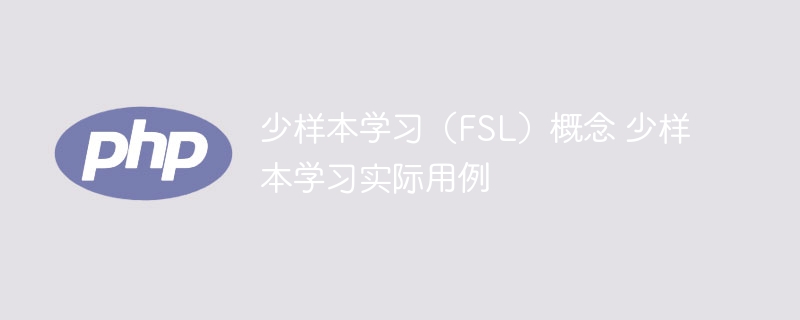

Few-shot learning (FSL), also known as low-shot learning (LSL), is a machine learning method characterized by the use of limited data sets for training.
A common practice in machine learning is to provide as much data as possible to train the model, because the greater the amount of data, the more effective the trained algorithm will be. However, this also increases costs. In order to reduce the cost of data analysis and machine learning, the goal of few-shot learning is to reduce the amount of data required. By using few-shot learning techniques, we can train accurate models with smaller amounts of data, saving time and resources.
Few-shot learning aims to allow machine learning to predict the correct instance class when a small number of examples are available in the training data set.
Zero-shot learning aims to predict the correct class without being exposed to any instances belonging to that class in the training data set.
Zero-shot learning and few-shot learning are commonly used in image classification, semantic segmentation, image generation, object detection and natural language processing algorithms.
Computer vision for processing character recognition, image classification, object recognition, gesture recognition, object tracking, part labeling, image retrieval, image generation, picture description, scene location recognition, shape view reconstruction of 3D objects, Motion prediction, event detection, video classification, etc.
Natural Language Processing (NLP): parsing, translation, sentence completion, emotion classification, user intent classification, text classification, etc.
Audio processing: voice cloning, voice conversion, cross-language voice conversion, etc.
Robot: learn to imitate actions, learn operating actions, visual navigation, continuous control, etc.
Other applications: Internet of Things analysis, mathematical curve fitting, mathematical logical reasoning
To implement few-shot learning projects, users can refer to the following libraries/repositories in Python:
Pytorch–Torchmeta: A library for small-shot classification and regression problems that can easily Benchmark multiple problems and be reproducible.
FewRel: A large-scale few-shot relation extraction dataset containing over a hundred relations and a large number of annotated instances across different domains.
Meta-Transfer Learning: This repository contains TensorFlow and PyTorch implementations of meta-transfer learning for Few-Shot Learning.
Few Shot: A repository containing clean, readable, and tested code for reproducing small-shot learning studies.
Prototype Network on Omniglot Dataset: Implementing "Prototype Network for Few-Sample Learning" via Pytorch.
The above is the detailed content of The definition and practical application of few-shot learning (FSL). For more information, please follow other related articles on the PHP Chinese website!
 Windows 10 activation key list
Windows 10 activation key list
 lightbox.js
lightbox.js
 What versions of linux system are there?
What versions of linux system are there?
 What's going on with the red light on the light signal?
What's going on with the red light on the light signal?
 How to deal with garbled Chinese characters in Linux
How to deal with garbled Chinese characters in Linux
 How to open an account with u currency
How to open an account with u currency
 How to type the inscription on the coin circle?
How to type the inscription on the coin circle?
 How to block a website
How to block a website




